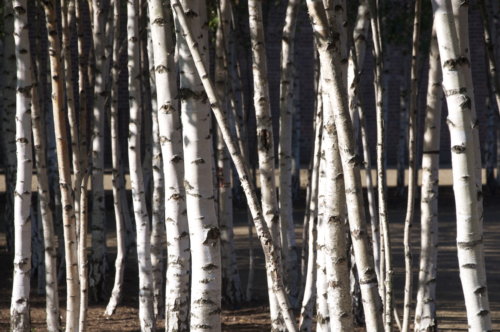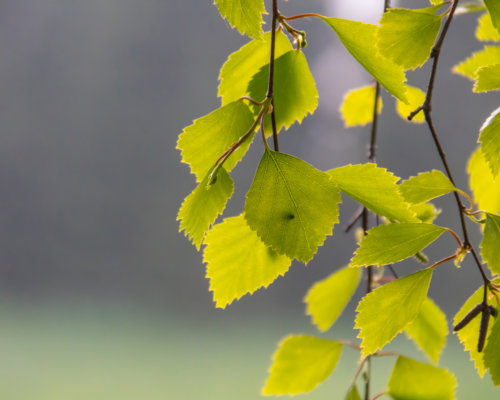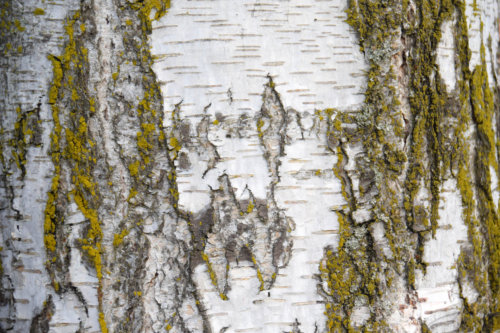You’ve Heard About Birch Water, But What About Birch Syrup?
According to the Canadian Encyclopedia, Historica Canada, a trucker once asked restauranteur Fernand Lachance to add cheese curds to his fries. In true Quebecois fashion, Fernand scoffed and proclaimed “ça va te faire une maudite poutine!” which roughly translates to “that will make a damned mess!” before serving the cheese-covered fries in a paper bag. It’s widely believed that this chance interaction led to the invention of poutine.
If Fernand Lachance didn’t eventually open his eyes to the opportunity right in front of him, and if that customer didn’t make his bold-and-delicious request, the world would be deprived of poutine. (I tip my hat to you, Good Sirs.) But what does poutine have to do with agritourism and birch syrup? Well, when opportunity knocks, you answer. And for Heloise Warren-Dixon of Moose Meadows Farm, that adage rings true on every level.
When Opportunity Knocks
When Heloise and her husband bought their 65-acre farm, they didn’t have a plan. One day, Heloise and her husband were doing some clearing to expand their pastures, and Heloise noticed a few paper birches lining the property. Heloise was introduced to the idea of birch syrup a few years earlier, and suddenly it dawned on her: What if, instead of clearing the birches, they tried their hand at birch syrup production?
If they sold the birches for lumber, they could have made a few thousand dollars, but Heloise and her husband opted for a plan of action with a lower environmental impact. Given their background in forestry, sustainability was a natural choice. Since then, Moose Meadows Farm has made its mark in the business of agritourism and birch syrup production in South Western Canada.
The Bold, Caramel-y Flavors of Birch Syrup
Aren’t maple syrup and birch syrup basically the same thing? Well, not quite. “Comparing birch syrup to maple syrup is like comparing apples to kumquats,” Heloise says. “Birch syrup is completely different than maple syrup.”
“Comparing birch syrup to maple syrup is like comparing apples to kumquats,” Heloise says. “Birch syrup is completely different than maple syrup.”
“Birch syrup has a bold, caramel-y flavor that varies from season to season.” Because of its distinct flavor, birch syrup is better suited to culinary applications, we’re told. “Maple syrup is typically used to add sweetness, whereas birch syrup is used to add flavor to certain dishes.”
Heloise describes, in mouth-watering detail, the various culinary uses for birch syrup. “Birch syrup is beautiful in sauces, reductions, vinaigrettes, and even desserts,” Heloise declares with pride. “It’s delicious in cheesecake and cookies too.”
Another difference between birch syrup and maple syrup is how labor-intensive the production can be. Birch syrup also has a lower viscosity, so it’s runnier than maple syrup. “Maple syrup has a high heat tolerance, but birch syrup burns easily, especially as you’re evaporating it down,” Heloise says. “Once birch syrup evaporates down, the sugars become caramelized, which lends to that rich, dark-brown color. But you mustn’t leave a batch of birch syrup in the evaporator for too long,” Heloise cautions.
“It’s hard to keep the evaporator boiling at a high efficiency without burning your syrup. My husband says that you’re not a birch syrup producer until you’ve burned a batch or two,” Heloise says jokingly. “It’s a rite of passage.”
“Sugaring Off”
Birch trees are tapped later in the season than maples, so Heloise and her husband need to keep an eye out for the early signs of spring. “The ground will start defrosting, the snow will start melting, and we might see a few butterflies and ladybugs fluttering about,” Heloise recalls. “That’s how we know we’re getting close to tapping season.”
Once the season inches into spring, Heloise and her husband pierce the trunks of about 300 birches. On average, each tree will produce around four liters of sap a day. “Typically, we bring in 600 to 800 liters of sap per day,” Heloise says. She and her husband collect sap every day, and they often fire up their wood-burning evaporator for 12 hours at a time.
“Sugaring off is an exciting time at Moose Meadows Farm. We do tractor rides, tree-tapping demos, pancake tastings, and tours of our sugar shack,” Heloise says of seasons past. “All the while, the sweet smell of birch syrup fills the air, and a dense steam billows from the chimney of the sugar shack,” Heloise recalls wistfully. “The intoxicating aroma catches your nose all the way from the driveway.”
Birch Water: “Nature’s Gatorade”
While Heloise and her husband are mainly in the business of birch syrup production, they’re aware of the various benefits of drinking birch water, which is marketed as a health drink in many countries. Heloise and her husband don’t produce birch water because there can be issues stabilizing the product and keeping the nutrients intact, she tells us, though she has been known to drink a glass of birch water straight from the tree.
“While the scientific evidence is still anecdotal at this point, I believe that birch water is an extremely nutritious way to quench one’s thirst. Birch water is loaded with nutrients, including Vitamin C. Deep in the forests up north, birch water was consumed when the water supply was scarce, and it was also taken to fend off scurvy,” Heloise tells Garden Collage. “I call it ‘Nature’s Gatorade.’”






































